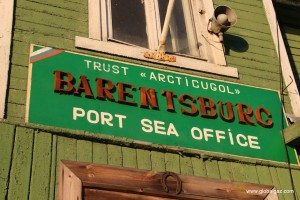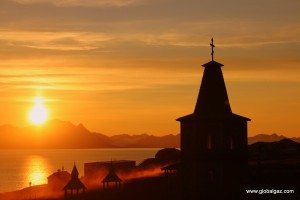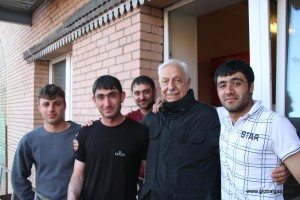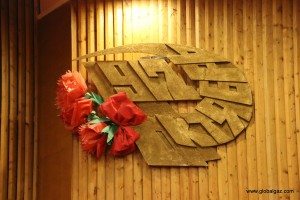Turkish Coffee? Think again!
Here’s an interesting article called "Misnomers Galore"
by Jirair Tutunjian.
by Jirair Tutunjian.
Panama hats don’t come from Panama. The German measles did not originate in Germany. Eau de Cologne doesn’t come from France. The Danes don’t eat Danish cookies. The french fries didn’t originate in France. Arabic numerals don’t come from Arabia neither do the “Arabian Nights” fairy tales. Fenugreek (“chaman” of basterma) doesn’t come from Greece. There are hundreds of similar misidentifications, misnomers in the global culture.

(Panama hats come from Ecuador. The measles was tagged “German” by the hostile British during their war with Germany. Eau de Cologne is manufactured in the northern German city of Cologne. The danish is an American invention. It was the Belgians who invented french fries. Most of the “Arabian Nights” stories hail from Iran, India, Beluchistan, Afghanistan). Fenugreek is believed to be of Middle Eastern origin but India is the biggest producer.
One nation which has been particularly lucky in the misattribution game is Turkey. Because of historic circumstances, ignorance, or sheer luck, a number of products are wrongly assumed to be of Turkish origin.
Coffee was discovered in Ethiopia by a shepherd who noticed that when his goats chewed on a wild berry they became livelier. Ethiopians soon began to grind and boil the berries to make a refreshing brew. The drink was called coffee because the berry was discovered in a place called Kaffa. From Ethiopia the coffee crossed the Red Sea to Yemen and then north to the Middle East. Armenian merchants, from the Ottoman Empire, introduced the drink to Vienna, Paris, and London. Because the Armenians came from the Ottoman Empire, Europeans wrongly assumed that they were Turks and the coffee a Turkish product.
“Turkish Delight” is of Iranian origin. A 19th century British tourist discovered the soft candy in Constantinople and shipped home a number of boxes and named them “Turkish delight”. The name stuck. “Turkish Delight’s” Iranian name is ahbisa. Arabs called it “rahat el hulkum” (contentment/rest of the throat). From “hulkum” we get “lokhum” sweets. Lokhum is, of course, another word some assume to be Turkish.
The semi-precious turquoise is not native to Anatolia. In the 16th century a French merchant imported the blue-to-green stone from Turkey and named it turquoise. The “Turkish” stones came from the Khorasan province of Iran. Iranians call it “phirouzeh” meaning victory. The Armenian version is “perouz”. Pharaohs imported the gem from Monitu in the Sinai peninsula. In recent years Turkish tourism promoters have began calling the Mediterranean shores of Asia Minor “Turquoise Coast”.
The footstool called “ottoman” is so-called because Napoleon’s soldiers saw it for the first time in Egypt, then officially part of the Ottoman Empire, although the ruling Memlukes didn’t pay much attention to the sultan in Constantinople. The ottoman was a traditional Middle Eastern stool and had nothing to do with the Ottomans or the Turks.
Everywhere in Germany, almost as popular as the bratwurst, is the doner sandwich. Because doner was introduced to Germany by Turkish immigrants, Turkey claims the sandwich is of Turkish origin, although it existed in the Middle East centuries before Turks showed up from Central Asia. The roasted meat on the vertical spit is known as gyro in Greek. Gyro is the Greek word for turning. The Armenians call the same dish “tarna” (turn). “Doner”/”donneur” means turning in Turkish.
Of course, being the origin of a popular product carries a lot of cache. In addition to prestige, it can have commercial benefits. Thus France has acquired international copyright for the Champagne and Cognac names. Non-French manufacturers of sparkling wine and brandy can’t call their drinks “champagne” or “cognac” which are French place names. In the past decade Cyprus, Lebanon, and several European nations have fought legal battle for the right of using the name “Halloum” for their cheese.
Although it has benefited from the misidentification of coffee, turquoise, and turkish delight, the Republic of Turkey is ever eager to appropriate even more place names, and in so doing distort history to its advantage.
The famed Mount Ararat of Biblical resonance has become Agri Dagh. Historic Cilicia has become Kukurova. Dersim (named after an Armenian clergyman called Der Simon) has become Tunceli. Of course, long ago Constantinople became Istanbul. Embarrassed by its name’s association with the large and clumsy fowl, Turkey has unsuccessfully tried to brand itself as “Turkiye”. In the past century, Ankara has turkified thousands of Asia Minor place names (from Armenian and Greek) in a well-organized strategy to erase all signs of the original inhabitants of Asia Minor. For a while, it even christened (sorry, we mean re-named) Kurds “Mountain Turks”. That campaign also failed. Kurds have asserted their name, their language, and identity.
Despite its obsessive efforts to rebrand the topography of Asia Minor and make it wall-to-wall Turkic, Ankara still faces a huge task. Izmir still has echoes of its original Greek Smyrna name, so does Konia (Iconium), Ankara (Angora), and Kayseri (Caesaria). But they say where there’s a will, there’s a way. One day the ever-diligent Turkish “historians” will go through the vast library of the Wise and Illustrious Sultan Abdul Hamid II and discover that these cities were founded by Turkic tribes thousands of years before Noah’s Ark landed on Mt. Ararat…sorry, we mean Agri Dagh. Turkey’s notorious “historians” have already decided Anatolia (“Sunrise” “Land of Sunrise” in Greek) derives from the Turkish “Ana Dolu” (“Pregnant Mother”). It was so named by the same….you guessed it…ancient Turkic tribes.
Incidentally, the Turkish yataghan sword is not a borrowed word or weapon. It is genuinely Turkish.


 The Lalezar Street in the Iranian capital city, Tehran, has been of special significance to Iranian and foreign residents of Tehran since the old times.
The Lalezar Street in the Iranian capital city, Tehran, has been of special significance to Iranian and foreign residents of Tehran since the old times. Nasser-ed-din Shah of Qajar dynasty was encouraged by his prime minister, Mirza Hossein Khan Sepahsalar, to take a trip to Europe in 1873.
Nasser-ed-din Shah of Qajar dynasty was encouraged by his prime minister, Mirza Hossein Khan Sepahsalar, to take a trip to Europe in 1873..jpg) Iranian capital city. As a result, he ordered construction of Lalezar Street at the Lalezar Garden.
Iranian capital city. As a result, he ordered construction of Lalezar Street at the Lalezar Garden. government had to pay remuneration to the London-based Imperial Tobacco Corporation of Persia despite the fact that the Treasury was actually empty.
government had to pay remuneration to the London-based Imperial Tobacco Corporation of Persia despite the fact that the Treasury was actually empty. Later developments such as the introduction of the first horse-drawn carriage to the street, the beginning of electricity supply to buildings situated along the street, and the construction of the first tram line along Lalezar, brought further prosperity to this street. Even the first telegraph line was first made operational in this street.
Later developments such as the introduction of the first horse-drawn carriage to the street, the beginning of electricity supply to buildings situated along the street, and the construction of the first tram line along Lalezar, brought further prosperity to this street. Even the first telegraph line was first made operational in this street..jpg) Only 9,000 square meters of the garden exists now, which has been fortunately registered as a national heritage so as to help the property out of the way of harm.
Only 9,000 square meters of the garden exists now, which has been fortunately registered as a national heritage so as to help the property out of the way of harm. Scheherazade), and Nader as well as Nasr and Pars theaters along with the building of Grand Hotel and part of the aforesaid magnificent garden with the building constructed in it by Mirza Ebrahim Khan Amin Os-Soltan are the last remnants of Tehran’s Champs-Élysées.
Scheherazade), and Nader as well as Nasr and Pars theaters along with the building of Grand Hotel and part of the aforesaid magnificent garden with the building constructed in it by Mirza Ebrahim Khan Amin Os-Soltan are the last remnants of Tehran’s Champs-Élysées.
 hub.
hub. Fakher Hekmat, to Mozaffar Baqaei, Hossein Makki, Mehdi Bazargan and Dr. Sahabi.
Fakher Hekmat, to Mozaffar Baqaei, Hossein Makki, Mehdi Bazargan and Dr. Sahabi. social developments in Tehran, which has likewise undergone a lot of change since its construction up to the present time.
social developments in Tehran, which has likewise undergone a lot of change since its construction up to the present time.








